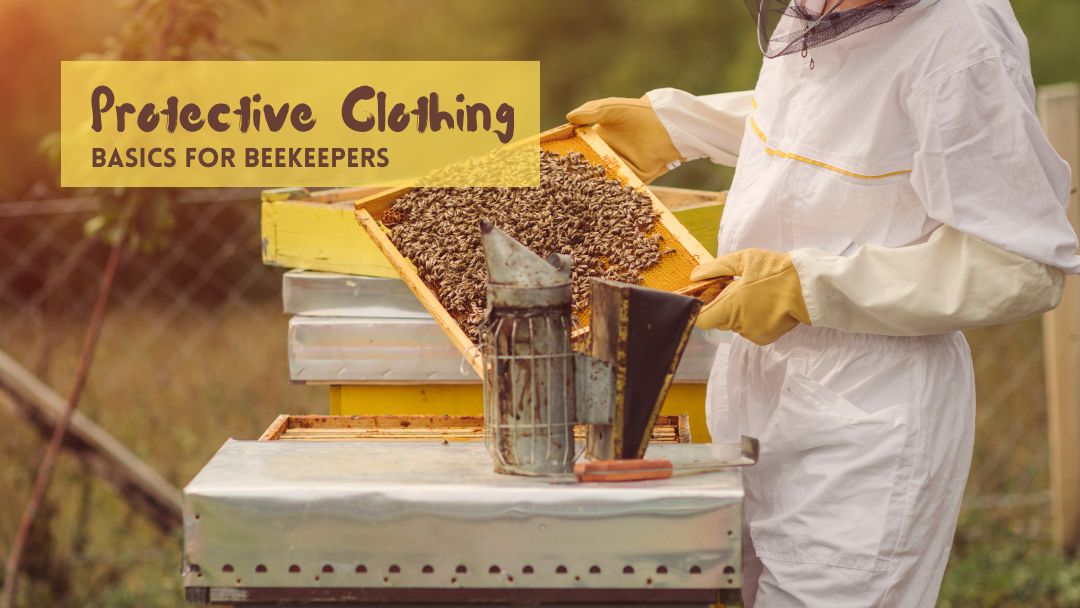Protective Clothing
Beekeepers need to protect their clothing from bee stings. The best way to do this is by wearing protective gear. This guide will provide you with information on the different types of clothing that are available and how to select the right one for you.
Different Items of protective clothing
Beekeepers should wear long-sleeved shirts and pants made from thick, tightly woven fabric. The fabric should be light in color so that it is less attractive to bees. Beekeepers can also choose to add layers such as a beekeeping jacket or veil for added protection.
The material of the clothing should be designed to help protect against bee stings. Cotton, denim, and canvas are all good materials for beekeeping protective clothing. They should be thick enough to resist a bee sting but also breathable enough to keep the wearer comfortable.
Other items that may be necessary include gloves, hats, boots, and overalls. Gloves should have long cuffs and be made from a thick material such as leather or canvas that is resistant to bee stings. Hats should have wide brims and fit snugly to protect the neck, ears, and face. Boots should be made of leather or waterproof material in order to protect the feet from bee stings. Overalls should also be made of thick fabric to protect the beekeeper from bee stings.
When selecting protective clothing for beekeeping, it is important to consider both comfort and protection. It should fit well and be comfortable to wear for a long period of time. Additionally, the material should be thick enough that it will not rip easily when stung by a bee.
Beekeeping protective clothing is an important part of staying safe while managing bees. By selecting the right type of clothing, beekeepers can protect themselves from stings and enjoy their hobby with peace of mind.

How do you select the right type of clothing for you as a beekeeper?
First, consider what type of protection you need from bee stings and the weather. Depending on the region where you live and work with bees, you should look for materials that are best suited to your environment, such as thicker fabrics like canvas if it is cooler or a more humid climate. Additionally, make sure to select clothing that is comfortable and allows you to move freely while working with bees.
Next, consider the type of headgear that best suits your needs as a beekeeper. Look for a hat or veil that will cover the face and neck completely, made from durable materials like canvas or leather. Additionally, make sure to select headgear with good visibility while working with bees, and that has an elastic band to keep it in place.
Finally, choose gloves that are made of thick material to protect against bee stings. Leather gloves provide good protection while still allowing you to move freely when working with bees.
By following these guidelines for selecting the right clothing and protective gear, beekeepers can ensure that they stay safe and comfortable while working with bees. It is important to select items that provide enough protection from bee stings and the weather, while also allowing you to move freely. By following these tips, you can be sure to find the best clothing for your needs as a beekeeper.
What are some tips for wearing protective clothing correctly?
When wearing protective clothing for beekeeping, it is important to ensure that the clothing fits properly. The clothing should not be too tight or too loose, as this can impede your movements while working with bees. Additionally, make sure that all of the zippers and buttons are fastened securely before beginning work with bees.
It is also important to ensure that your clothing covers all exposed areas of the skin. Any exposed skin is at risk for stings, so it is best to be sure that no part of your body is left unprotected. Additionally, make sure to tuck the ends of your pants into long socks or boots, as this will prevent bees from entering through those areas.
Finally, make sure to do a quick check of your clothing and protective gear before beginning work with bees. Make sure that all zippers, buttons, and ties are secure, and that any exposed skin is completely covered. By following these tips, beekeepers can ensure that their protective clothing fits properly and keeps them safe while working with bees.
Conclusion
By following these guidelines and tips for selecting and wearing protective clothing, beekeepers can ensure that they stay safe and comfortable while working with bees. It is important to select items that provide enough protection from bee stings and the weather, as well as allow them to move freely.

